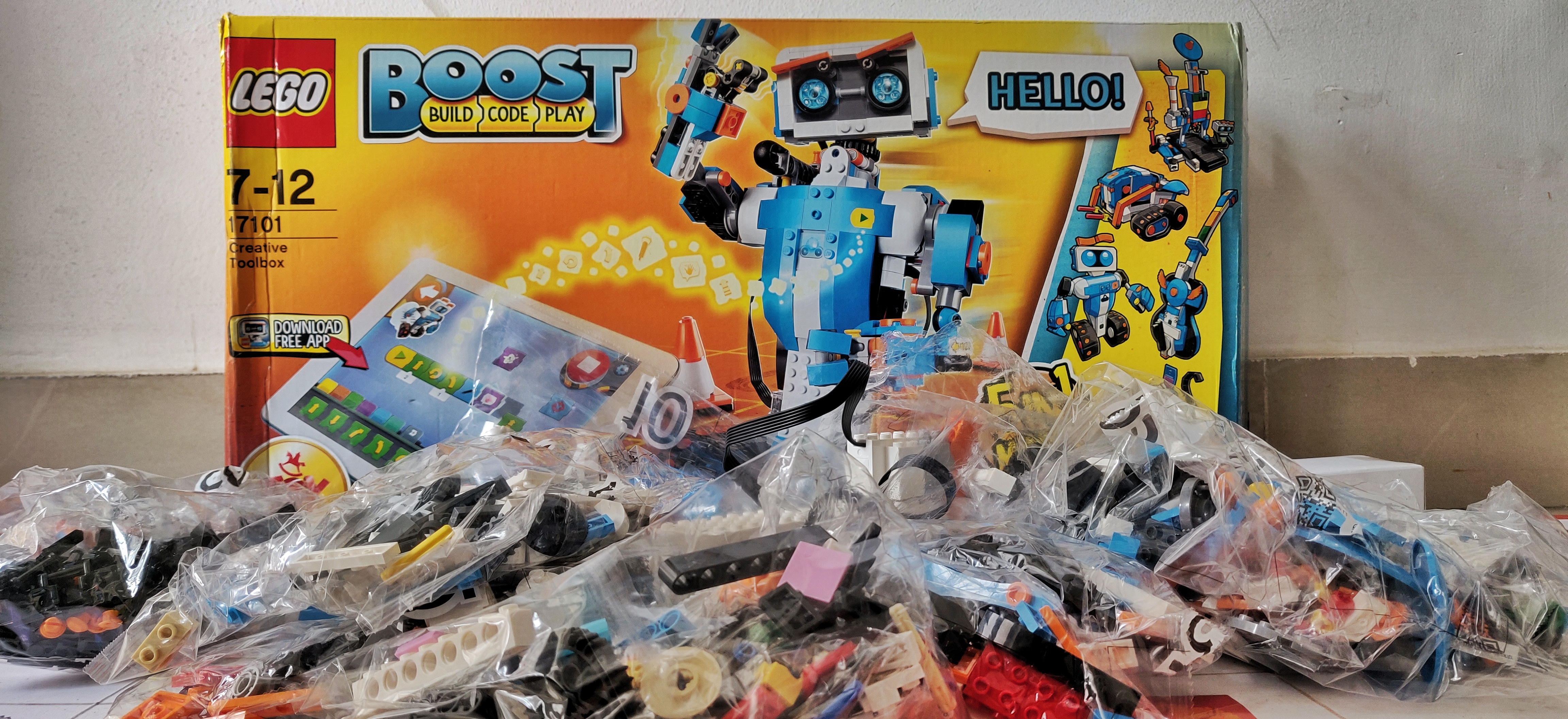TechRadar Verdict
For Rs 19,999, the LEGO Boost is worth the asking price and kids will be busy with it for a long time.
Pros
- +
Neatly organized
- +
Walk through tutorials on Boost app
- +
Fun and easy to build
Cons
- -
Steep pricing
Why you can trust TechRadar
LEGO is a company synonymous with their huge range of building block toys for kids under different age groups. Taking the crown from Ferrari, the Denmark based company became the most powerful brand of 2015. A part of the credit goes to The Lego Movie that came out that year which familiarized the brand with people from different generations.
Having said that, LEGO in itself is a company that has been manufacturing the building bricks for almost 70 years now, selling more than 75 billion bricks annually in over 140 countries. Its 7-decade long legacy makes LEGO a brand that is as renowned and popular among toddlers as well as a 16-year-old kid.
Its USP lies in its special designing which makes it safe to play with and additionally teaches the player a thing or two about robotics and programming and is a lot more fun than it actually looks.
We at TechRadar India recently got a chance to play around with the LEGO Boost Creative Toolbox. I would consider this to be my first LEGO experience ever and in most accurate terms I was pretty delighted. Here’s what I found out.
Unboxing LEGO Boost Creative Toolbox
LEGO’s Boost is a kit that lets us create 5 models which are controlled by a companion app. The app is available for both Android and iOS devices but it is recommended to use a tablet for good experience. And right they are! In this creative toolbox, the LEGO bricks play as important a role as does the software experience.
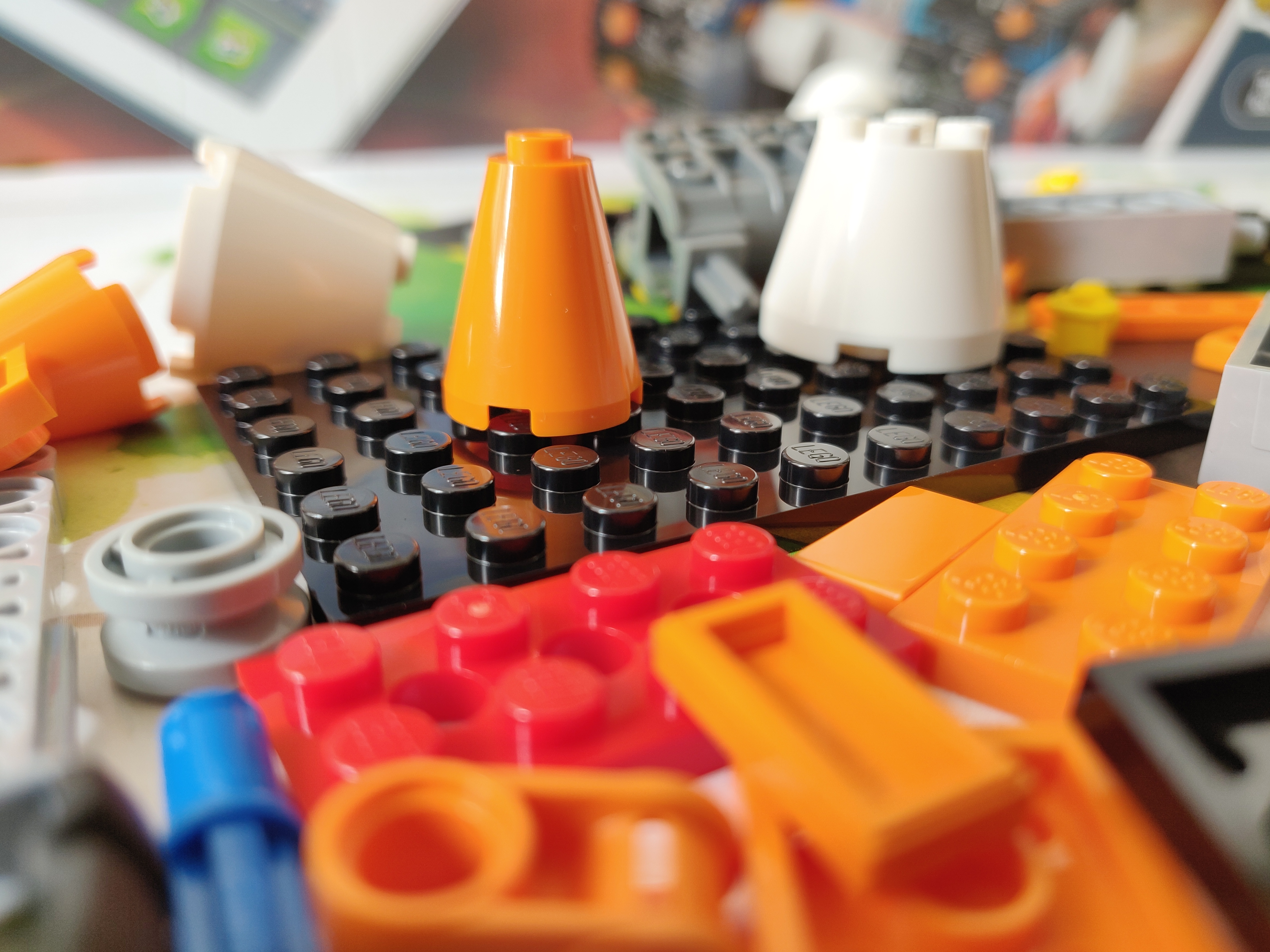
The kit is rather big than I imagined and fits in 847 pieces of sheer goodness. Opening up the pack, you will see all the pieces neatly arranged in packets with numbering on each one of them. There’s a separate packet for a motor, infrared color and distance sensor and a move hub which connects via Bluetooth to the LEGO Boost app and lets us remotely control our creations.
After downloading the app on an Android tablet I started with the tutorial and found myself building a basic car to showcase the various functionalities that the Boost creative toolbox offers. For this, I needed the move hub, wheels and some bricks. During the course of building different models, the app will tell us which brick is needed and the corresponding packet where we can find it. (Neatly done, LEGO!) The remote control is rather seamless and there’s no pertinent lag in the execution of commands filled in by us.
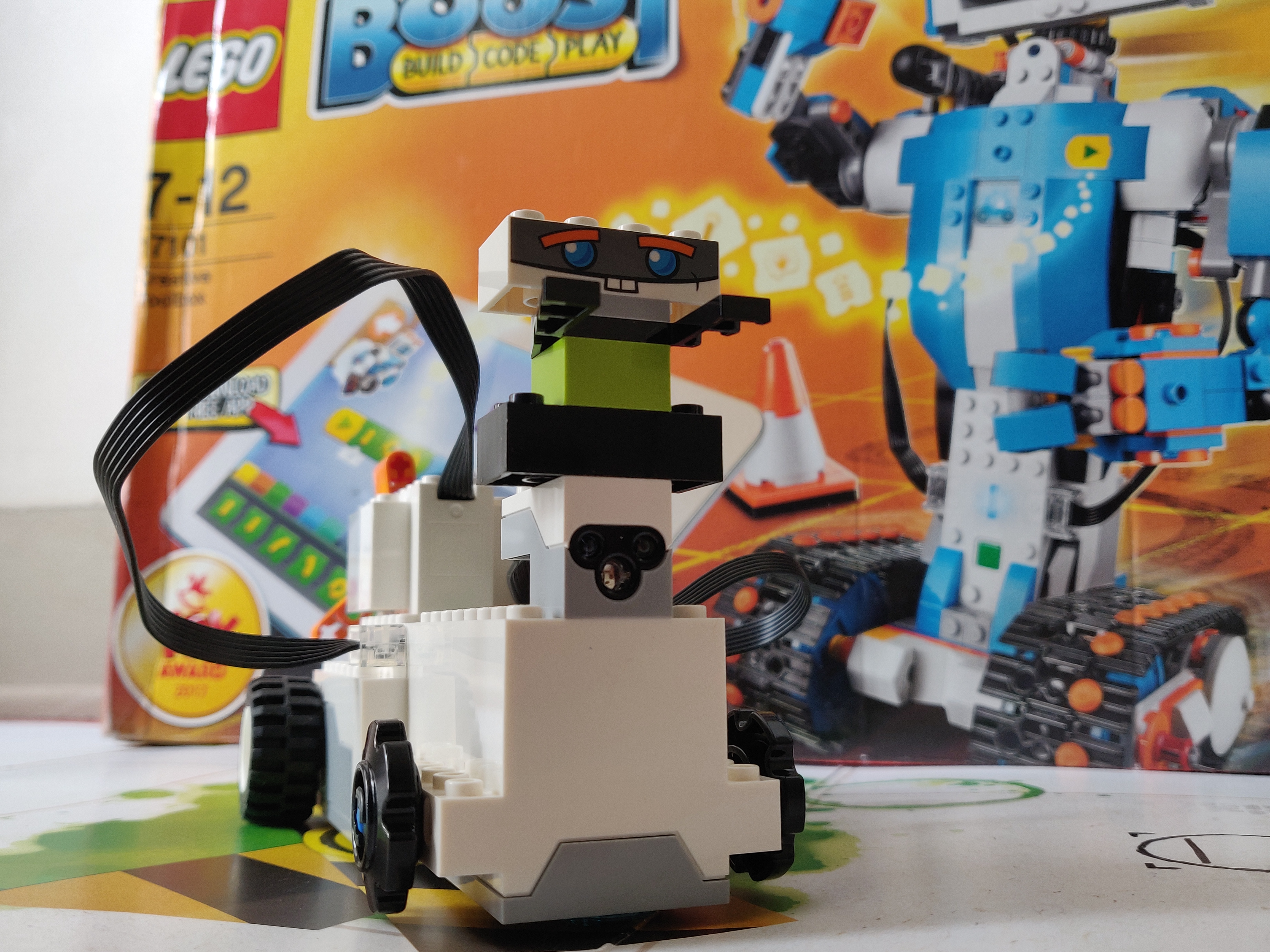
In the kit, there is a card sheet which has tracks printed on it and seems like a playground for the virtual commands we enter through the app. The Boost app allows us to give various commands to move and perform certain actions via icons. This icon-based coding system makes it really intuitive to play with. There’s an added audio feature as well but sadly no speakers in the build which is why the audio plays through our tablet.
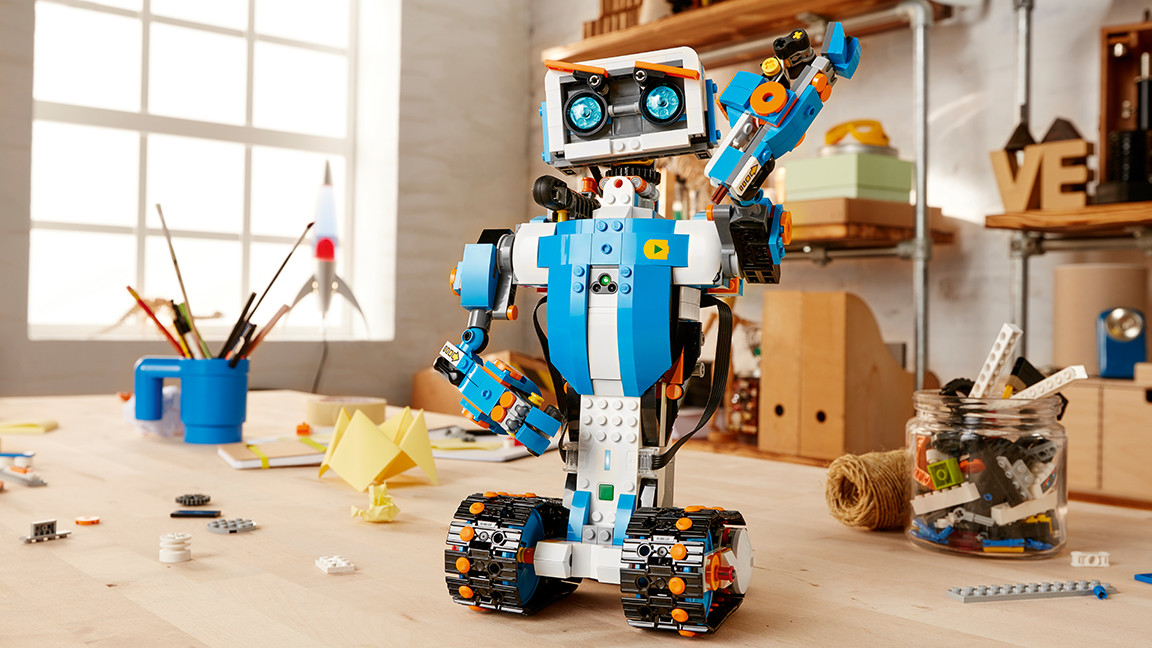
Coming to the 5 models that can be built using the 847 LEGO pieces, there’s Vernie the robot which is a cute little thing, has expressions, can dance, shoot targets and beatbox. Vernie moves through the caterpillar tracks fitted in place of its legs. Building Vernie was a fun task as the whole thing is divided into levels. A couple of colleagues also got into helping me build it. Finishing the levels was a joy and almost an achievement as we finished building the robot.
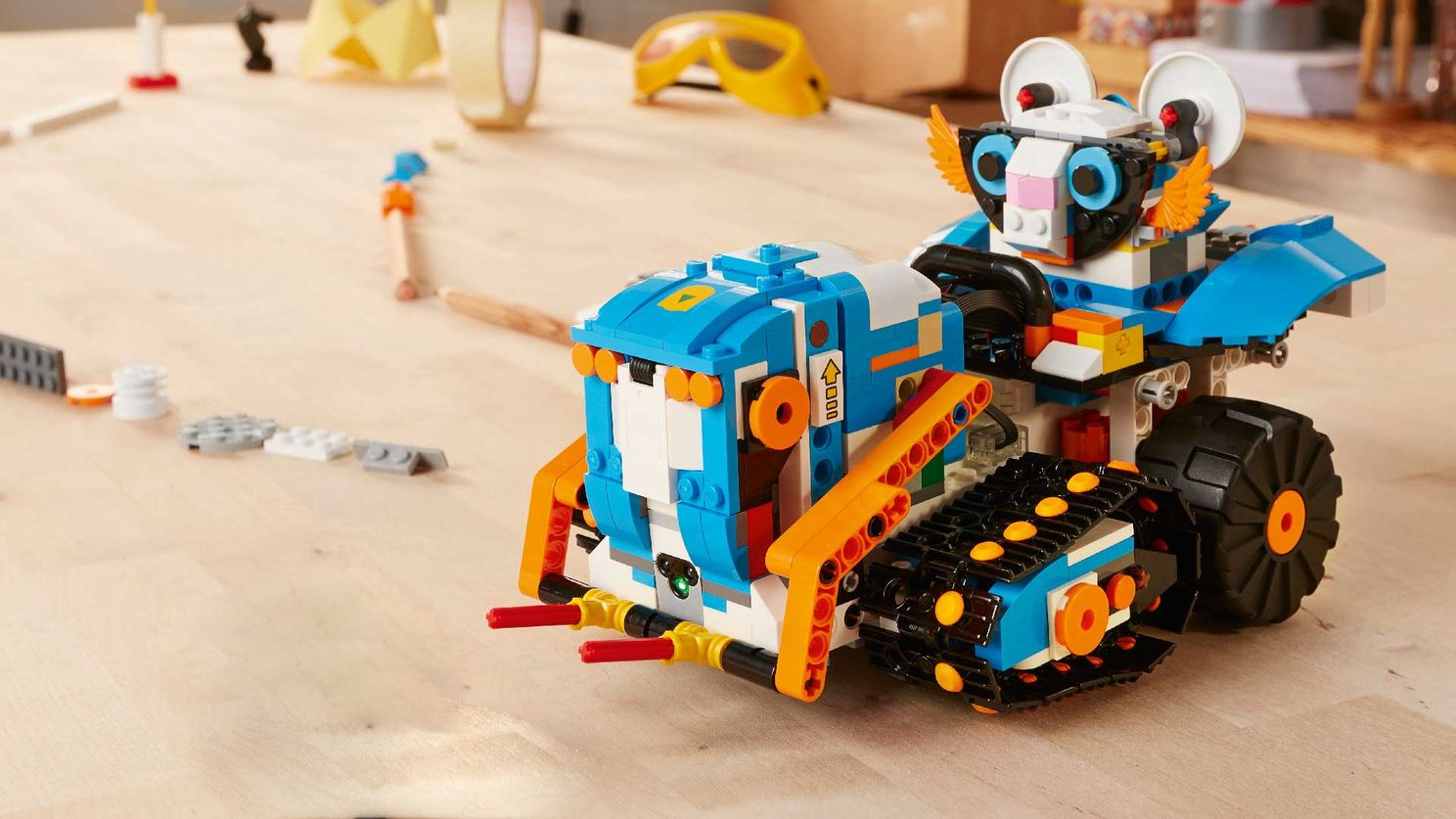
Next up, was the M.T.R.4, a Multi-Tooled Rover 4 which is basically a tank with different tools such as the spring-loaded shooter. Then I built a guitar for me because I never had one. The Guitar4000 has pitch bend and sound effects so I could practically play music through it.
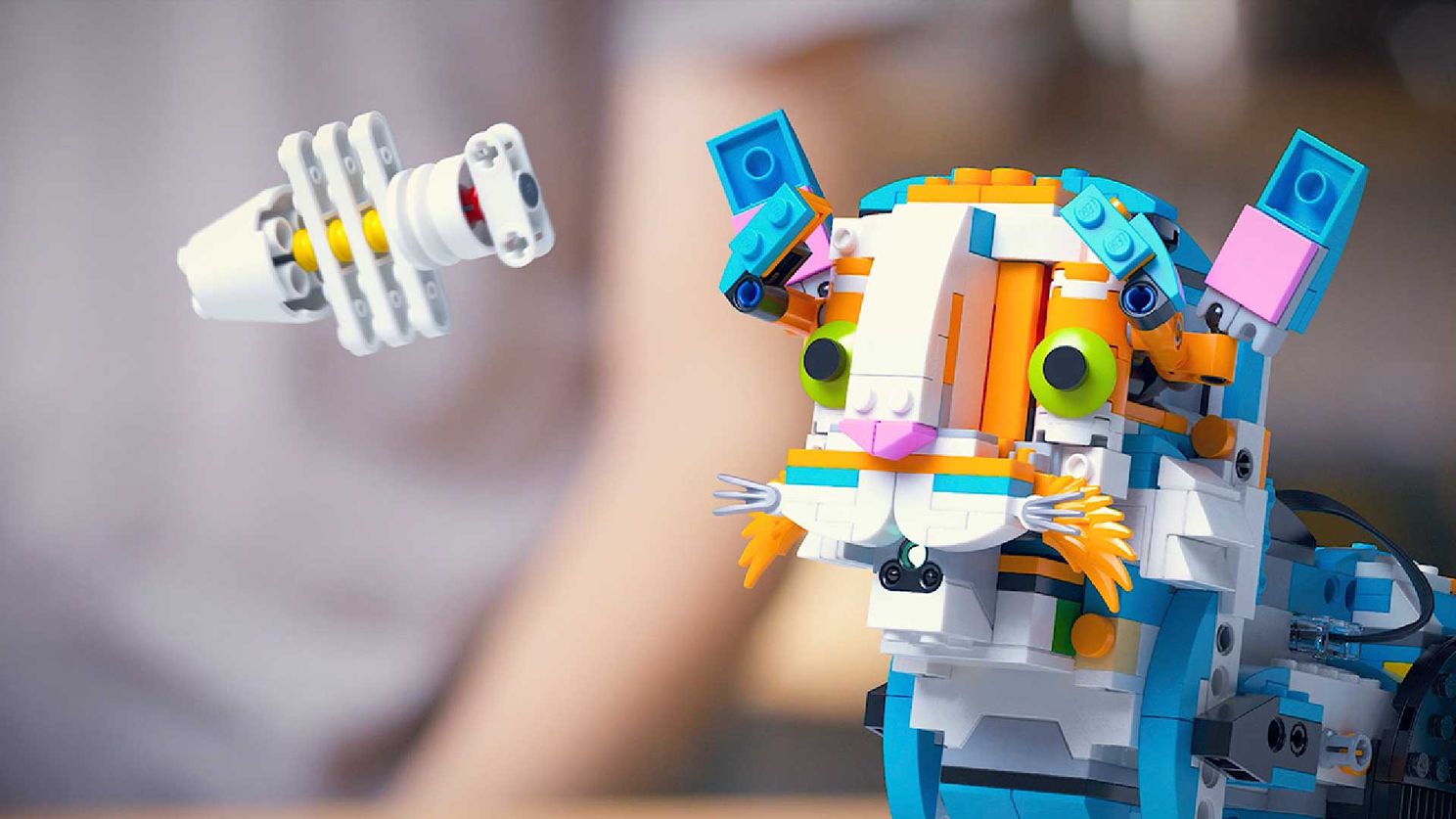
The second robot in the series was Frankie the cat which unlike Vernie just purred and played along with us. The final model was the AutoBuilder which is essentially a production line to create mini LEGO models. Apart from these models, the LEGO Boost is also compatible with LEGO City Arctic Scout Truck and LEGO Ninjago Stormbringer.
The models are fairly easy to build and with every model built, I got familiar with a couple of bricks set which made the next builds easier. To top it off, the system of breaking a single model build into different levels is just awesome because kids will just be motivated to go further ahead.
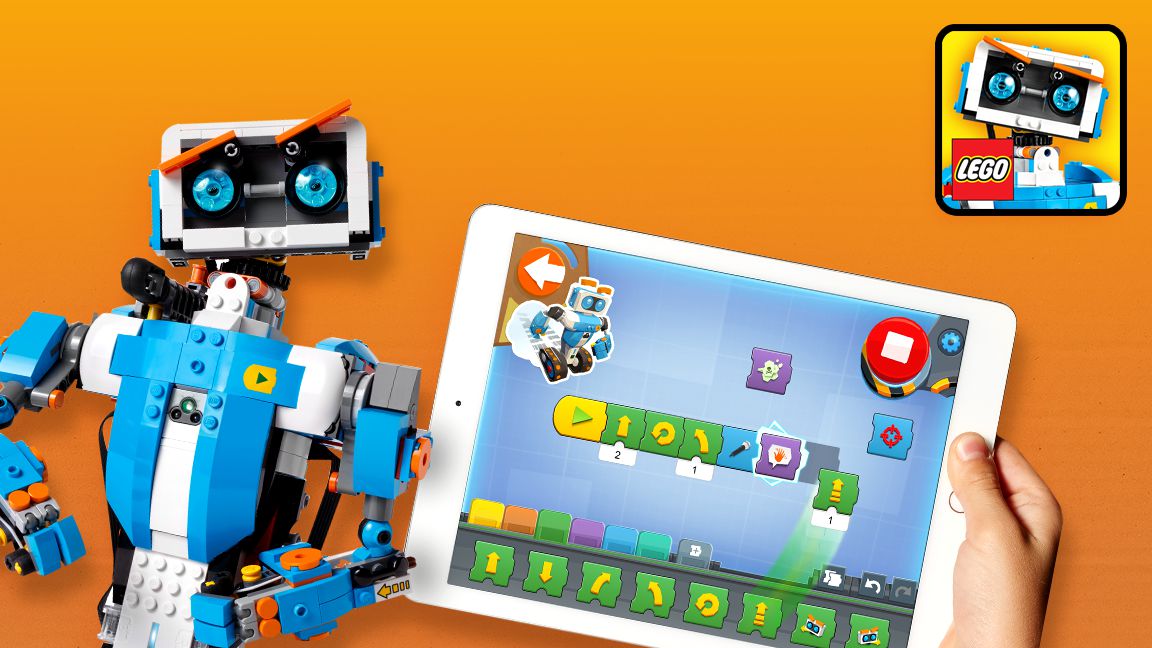
On the Boost app, the interface is pretty simple and kids would love the kind of animations and characters that come along the screens. To create a model the app provides us with blueprints following which the models can be brought to life and then controlled by the tablet. The actions that can be coded are all visually obvious and color themed. The action cards can be moved by drag and drop onto the play area. There’s a play button which starts the sequence of actions coded by us.
Creating the models, I realized the various different skill set that the LEGO Boost provides to the players. It demonstrates the actions by using certain programs which can be played in a loop and hence imbibes a curiosity of trying and creating your own set of actions. Further, on building all the 5 models, the toolbox also offers an advanced mode where custom programs can be created and used on the different models. It is as fun and creative as it can be to build and execute all the functions.
Verdict
For those who can afford it, the LEGO Boost Creative Toolbox is a toy that your kid (and probably you too) will definitely love and enjoy. As parents, you can very well be assured that they are learning the very basic nature of programming and control while also being curious. In fact, the Boost creative toolbox can also be a team effort and a whole family can help build it.
For Rs 19,999, the LEGO Boost is worth the asking price and kids will be busy with it for a long time.
- Siddharth Chauhan is the Consumer Technology Reporter at Digit India. He used to work as an Assistant Editor at TechRadar India
